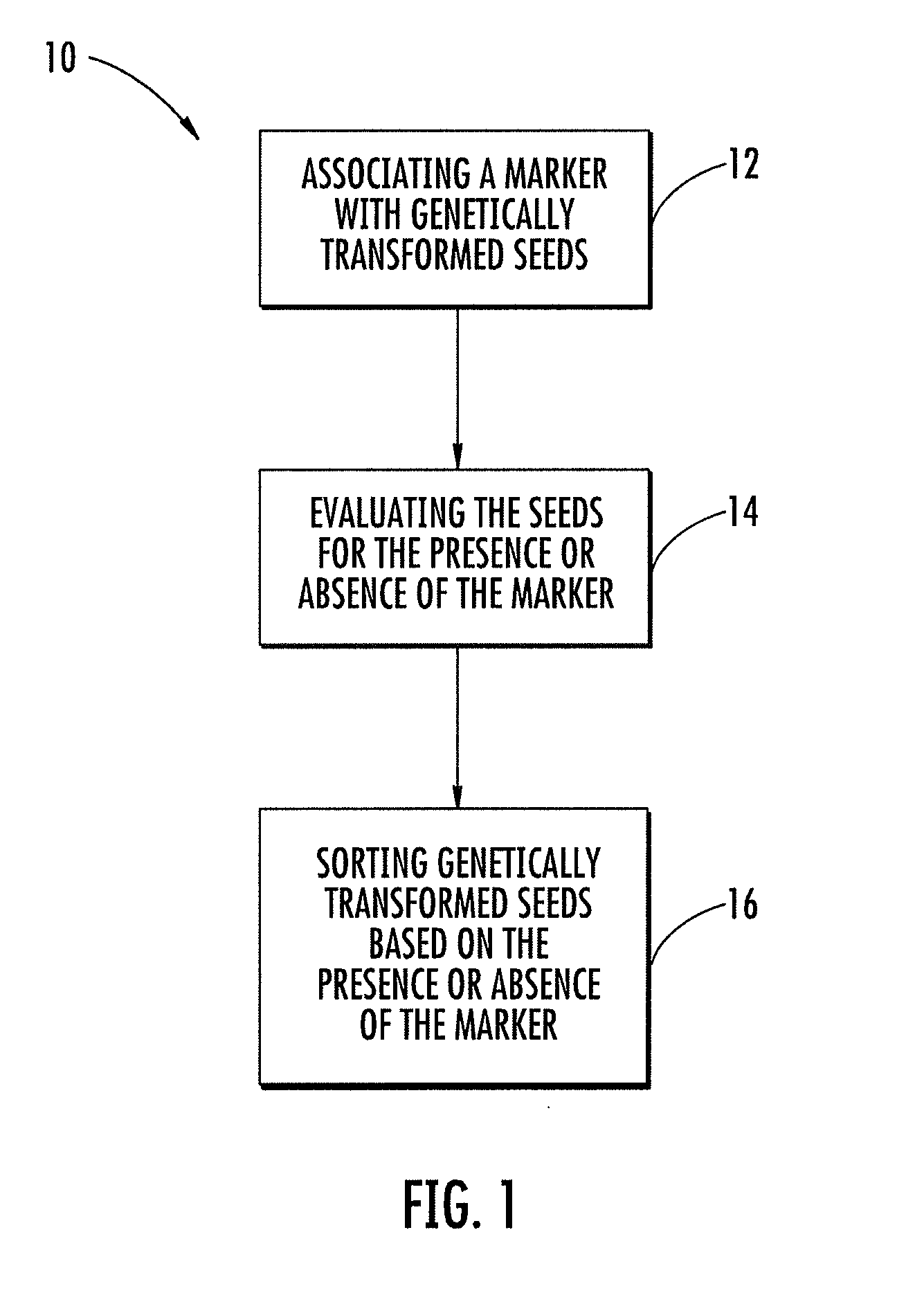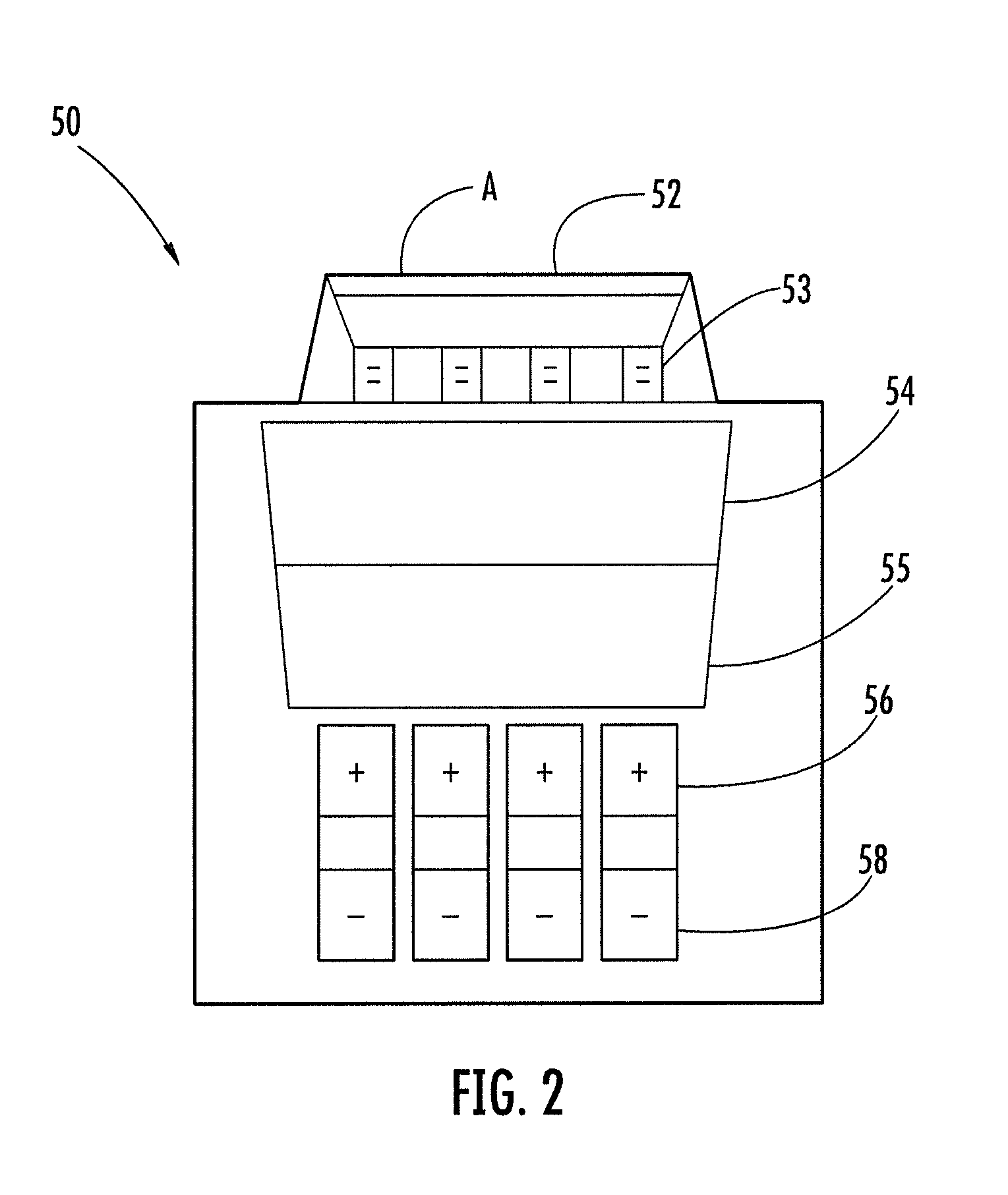Method and computer program product for distinguishing and sorting seeds containing a genetic element of interest
a technology of genetic elements and computer programs, applied in the field of distinguishing and sorting seeds, can solve the problems of difficult to determine whether a particular seed contains a genetic element, the hand pollination process requires significant labor and a tassel bag, and researchers often cannot afford to wait or guess
- Summary
- Abstract
- Description
- Claims
- Application Information
AI Technical Summary
Benefits of technology
Problems solved by technology
Method used
Image
Examples
experimental example
Introduction
[0074]Fluorescent protein (FP) marked seed are being produced for use in sterility systems and for evaluating the impact of one or more inserted genes on yield. It is a laborious process to separate a segregating population of seed into those containing (+) and those not containing (−) a genetic element of interest.
[0075]A project was initiated to develop an automated sorting routine that may be capable of efficiently separating FP+ from FP− seed using a vibratory feeder similar to that shown in FIG. 6
Results
[0076]A vibratory feeder (see FIG. 6, for example) was evaluated with the Satake ScanMaster® system to assess sorting speed and accuracy in some embodiments of the present invention. It is known that it takes approximately 30 minutes to sort 3500 kernels by hand. The FP-discerning ScanMaster® (see FIG. 8, for example) equipped with a vibratory feeder (see FIG. 6, for example) for singulation, was shown to be capable of sorting the same sample in about 2 to 3 minutes....
PUM
| Property | Measurement | Unit |
|---|---|---|
| Length | aaaaa | aaaaa |
| Fluorescence | aaaaa | aaaaa |
Abstract
Description
Claims
Application Information
 Login to View More
Login to View More - R&D
- Intellectual Property
- Life Sciences
- Materials
- Tech Scout
- Unparalleled Data Quality
- Higher Quality Content
- 60% Fewer Hallucinations
Browse by: Latest US Patents, China's latest patents, Technical Efficacy Thesaurus, Application Domain, Technology Topic, Popular Technical Reports.
© 2025 PatSnap. All rights reserved.Legal|Privacy policy|Modern Slavery Act Transparency Statement|Sitemap|About US| Contact US: help@patsnap.com



